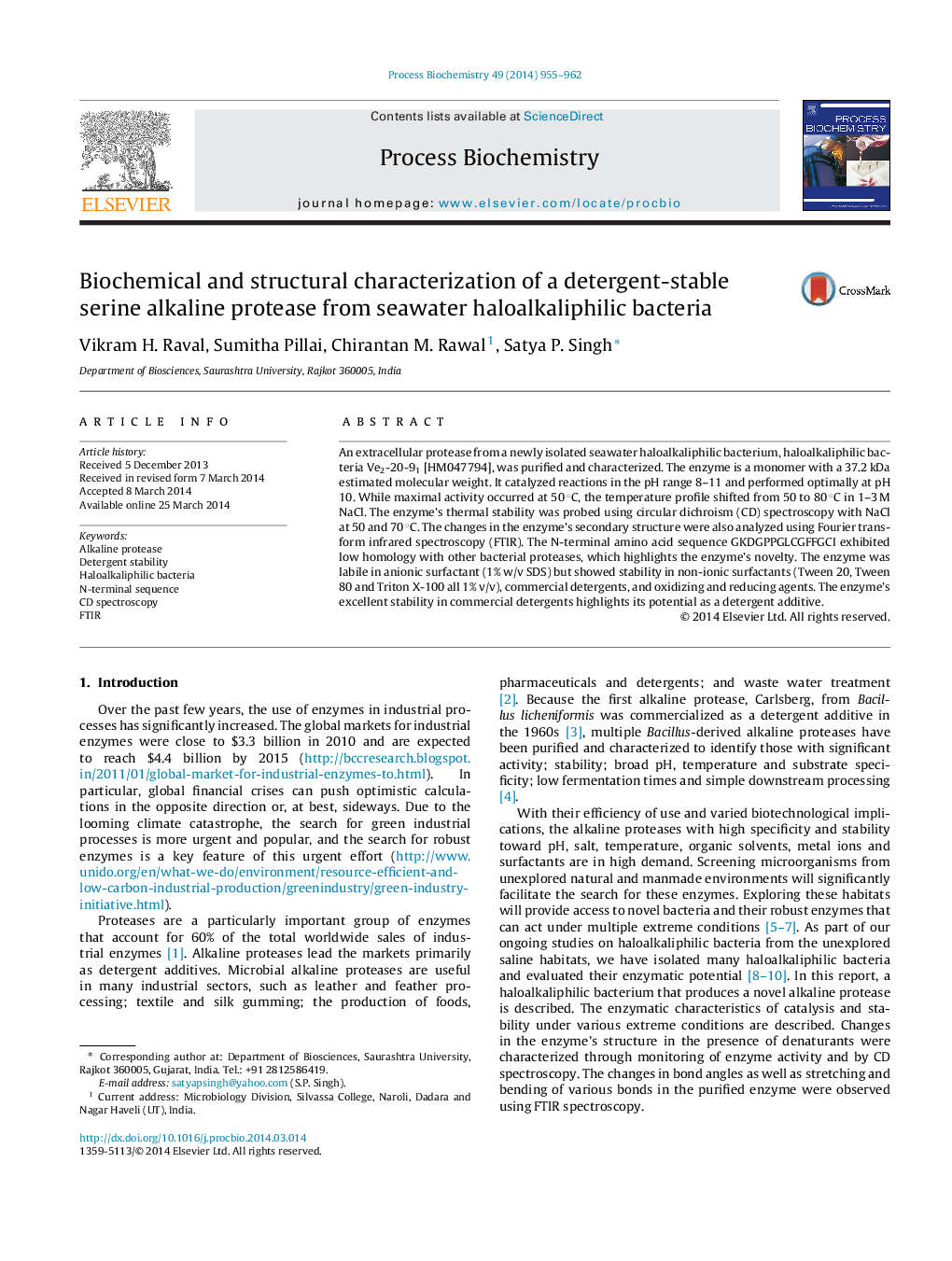| Article ID | Journal | Published Year | Pages | File Type |
|---|---|---|---|---|
| 34372 | Process Biochemistry | 2014 | 8 Pages |
•The N-terminal sequence suggests novelty of the enzyme.•The purified protease has optimal temperature of 50 °C, optimal pH 10.0.•The NaCl dependent shift in temperature optima from 50 to 80 °C.•Structure and Function analysis of the enzyme by CD spectroscopy and FTIR.•SDS labile but surfactant and detergent stable and 95% stability in various surfactants and detergents even after 24 h.
An extracellular protease from a newly isolated seawater haloalkaliphilic bacterium, haloalkaliphilic bacteria Ve2-20-91 [HM047794], was purified and characterized. The enzyme is a monomer with a 37.2 kDa estimated molecular weight. It catalyzed reactions in the pH range 8–11 and performed optimally at pH 10. While maximal activity occurred at 50 °C, the temperature profile shifted from 50 to 80 °C in 1–3 M NaCl. The enzyme's thermal stability was probed using circular dichroism (CD) spectroscopy with NaCl at 50 and 70 °C. The changes in the enzyme's secondary structure were also analyzed using Fourier transform infrared spectroscopy (FTIR). The N-terminal amino acid sequence GKDGPPGLCGFFGCI exhibited low homology with other bacterial proteases, which highlights the enzyme's novelty. The enzyme was labile in anionic surfactant (1% w/v SDS) but showed stability in non-ionic surfactants (Tween 20, Tween 80 and Triton X-100 all 1% v/v), commercial detergents, and oxidizing and reducing agents. The enzyme's excellent stability in commercial detergents highlights its potential as a detergent additive.
